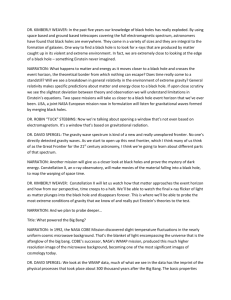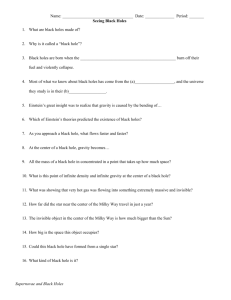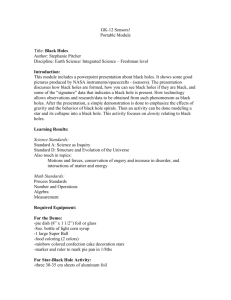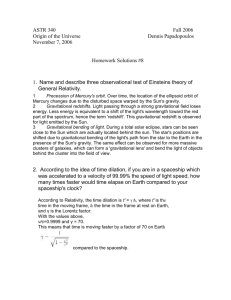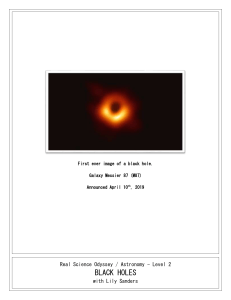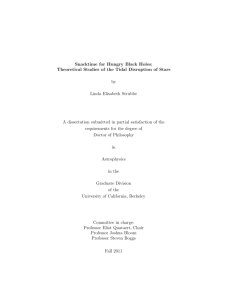What happens when you fall into a black hole?
advertisement
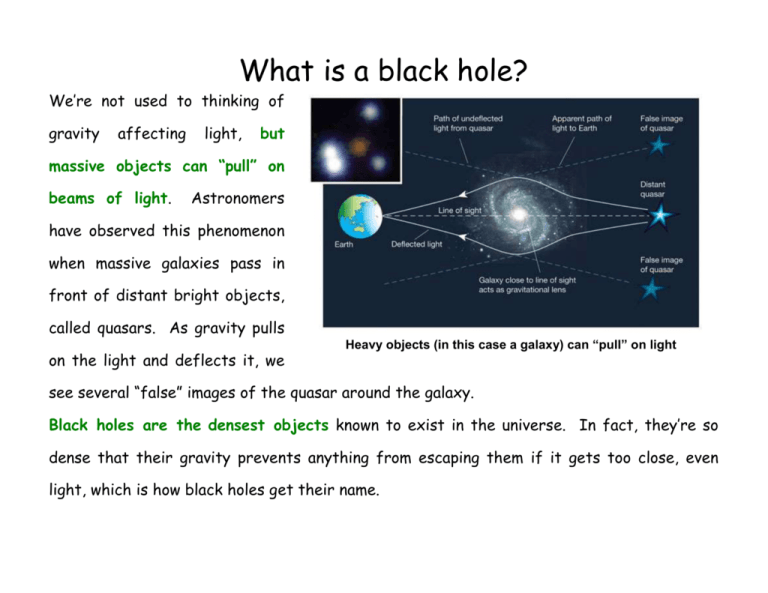
What is a black hole? We’re not used to thinking of gravity affecting light, but massive objects can “pull” on beams of light. Astronomers have observed this phenomenon when massive galaxies pass in front of distant bright objects, called quasars. As gravity pulls on the light and deflects it, we Heavy objects (in this case a galaxy) can “pull” on light see several “false” images of the quasar around the galaxy. Black holes are the densest objects known to exist in the universe. In fact, they’re so dense that their gravity prevents anything from escaping them if it gets too close, even light, which is how black holes get their name. Supernovas form black holes To become a black hole, matter must be squeezed together with extreme forces! In nature, this can occur when big stars run out of fuel and explode in a supernova explosion. Stars make energy by fusing elements together and making heavier ones. Young stars are mostly made up of hydrogen, which they fuse to form helium. When most of the hydrogen in the core has been converted to helium, a new nuclear reaction begins that converts the helium to carbon. This process continues converting the carbon to oxygen to silicon to iron. If you could slice a very old star in half, it may look (sort of) like this: A big old star Even though the star is huge and heavy, its radiation keeps it from collapsing on itself. However, nuclear fusion stops at iron. So if the star makes a big enough iron core, there’s nothing to keep it from collapsing on itself. When that happens, the outer layers fall inwards and “bounce” off the iron in a massive explosion. If the star is heavy enough, the remnants of the explosion is a black hole. So what happens in and around a black hole? Far away from a black hole, you wouldn’t feel any different. It’s a misconception that black holes suck everything everywhere into them like a giant cosmic vacuum. They, just like any other massive object in the solar system, pull on you gently with their gravity. Things only feel different when you get close enough. When you stand on Earth, gravity at your feet is a little stronger than at your head, because they’re closer – you just don’t feel it very much. Near a black hole, these tidal forces are much stronger; in fact, the difference is large enough to pull a person apart! So if you were to fall towards a black hole, you would unfortunately die before making it all the way in. If you were to get very close (past a point of no return called the event horizon), you would never be able to escape. It is past this point that not even light can escape. Of course, since not even light can escape, nobody knows what’s “inside” the black hole.

